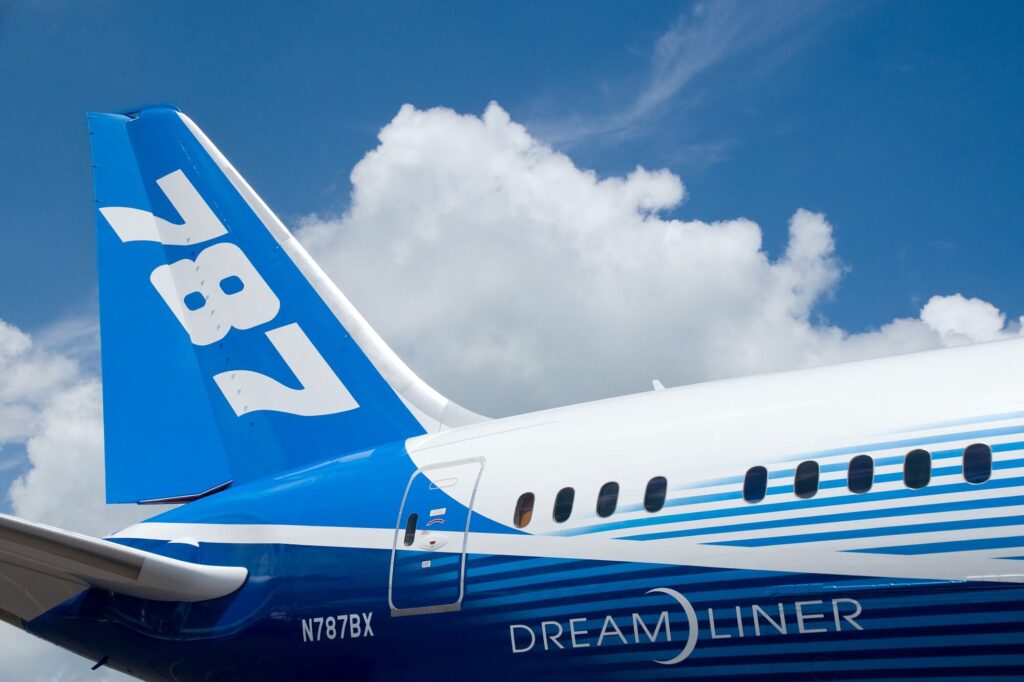Following the Federal Aviation Administration’s (FAA) decision to temporarily stop certification of newly built Boeing 787s between May 2021 and August 2022, it is more efficient for Boeing to build new aircraft rather than to restore the stored inventory from that period, analysts have said.
Boeing was essentially stopped from delivering new 787s between May 2021 and August 2022, as multiple production issues were discovered on the aircraft. These problems began much earlier, namely in H2 2020, when the FAA began investigating production shortfalls related to the shims that fill the gaps between fuselage sections and the smoothness of the inner fuselage skin. While individually these issues did not pose any danger, the combination of the two could lead to potential structural failures on the 787 Dreamliner.
Issues continued and, to ensure safety as well as eliminate any production problems, Boeing temporarily halted production of the Dreamliner in May 2021, after the FAA requested more data from the manufacturer.
Continuing 787 deliveries
Deliveries resumed in August 2022, when the planemaker handed over a 787 to American Airlines (A1G) (AAL) more than a year after its last delivery of the aircraft to a customer.
By June 30, 2022, Boeing had approximately 120 Dreamliners in inventory, reducing that number to 115 as of September 30, 2022, the company’s Q2 and Q3 2022 Securities and Exchange Commission’s (SEC) filings demonstrated. According to planespotters.net, the planemaker delivered an additional 12 Dreamliners, 10 of which were more than six months old.
During the company’s Q3 2022 earnings call, Brian West, Boeing’s Chief Financial Officer (CFO), stated that “the pace of deliveries from inventory going forward will be based on finishing rework as well as customer fleet planning requirements.” He also added that the manufacturer expects to clear its inventory over the next two years.
“We continue to produce at a low rate and will gradually return to five airplanes per month over time. Near term, the supply chain remains a key watch item for 787 production and deliveries. Longer term, with more than 400 airplanes in backlog, we anticipate higher production rates due to the expected wide-body market recovery,” concluded West.
Labor shortages throughout the aviation industry
But whether Boeing can scale the production and deliveries of the 787 will also depend on other factors, such as labor.
“The labor hours to build new 737 MAX are the same as bringing one out of inventory. On the 787, it is more labor efficient to build a new 787 than to bring one out of inventory,” stated Ron Epstein, a Senior Equity Analyst at Bank of America. “This could imply the 787 inventory burn down will take longer than expected,” added Epstein.
The main cause of the issue is not a lack of employees at Boeing’s sites, at least according to David Calhoun, the President and CEO of the company. During the same Q3 2022 earnings call, he noted that while the manufacturer is “at a head count level that we think can handle rate increases and all the things that we need inside our own shop,” the challenge will now be to train and integrate 10,000 people that Boeing has brought on.
“We have significant training and development programs and investments that are being made as we speak so that we are productive with the introduction of all of these new people,” Calhoun added.
Furthermore, the ever-complex supply chain has been suffering as well. “A lot of our constraints with those suppliers that represent constraints are labor-related,” the CEO continued.
“We are going to struggle through all year next year,” Calhoun concluded.
Meanwhile, Epstein noted during the Defense & Aerospace Report Podcast dated December 4, 2022, that “as we go in 2023 and possibly even 2024, both manufacturers [Airbus and Boeing – ed. note] and defense OEMs [Original Equipment Manufacturers – ed. note] will be plagued by supply chain issues and a lot of that has to do with labor”.
“Getting everything back to ‘normal’ this time around is just going to take a lot of time,” Epstein concluded.

